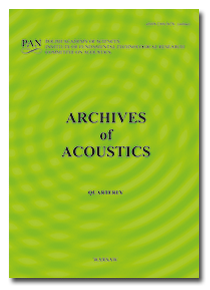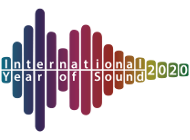Archives of Acoustics,
9, 1-2, pp. 113-116, 1984
Cavitation effect in some erythrocyte suspensions
The destructive effects of ultrasound on cell suspensions depend on the parameters of the ultrasonic field and the experimental conditions. Erythrocytes of three origins were investigated: frog, chicken and rat. The frequency of the ultrasound was 1 MHz, with the intensity ranging from 0.4 to 1.2 Wcm^{-2}. The volume concentrations of the samples were in the range 0.5-2 per cent. The investigation determined the volume concentration limit at which, at a sufficiently high field intensity, the destructive effect may be produced.
In well defined conditions (at sufficiently low concentration) cavitation occurs, which has destructive effects (haemolysis). Haemolysis is produced at a well defined concentration in each case, depending on the physical, chemical and biological properties of the erythrocytes. The threshold concentration varies for different erythrocytes; thus the following values were obtained at 0.4 Wcm^{-2}: chicken 0.5 per cent, frog 1 per cent, rat 2 per cent. At low intensities (J = 0.4 Wcm^{-2}), high frequency, short duration and diluted suspensions, cavitation plays a mayor role in the haemolysing action.
In well defined conditions (at sufficiently low concentration) cavitation occurs, which has destructive effects (haemolysis). Haemolysis is produced at a well defined concentration in each case, depending on the physical, chemical and biological properties of the erythrocytes. The threshold concentration varies for different erythrocytes; thus the following values were obtained at 0.4 Wcm^{-2}: chicken 0.5 per cent, frog 1 per cent, rat 2 per cent. At low intensities (J = 0.4 Wcm^{-2}), high frequency, short duration and diluted suspensions, cavitation plays a mayor role in the haemolysing action.
Full Text:
PDF
Copyright © Polish Academy of Sciences & Institute of Fundamental Technological Research (IPPT PAN).
References
R. P. CLARKE, C. R. HILL, Physical and chemical aspects of ultrasonic disruption of cells, J. Acoust. Soc. Am., 47, 2, 649-653 (1970).
A. CSEKO, E. VERESS, Comparison of ultrasonic intensity measurements in different experimental conditions, Proc. 7 Int. Congr. on Acoust. Budapest, 18-26 August 1974, 561-564.
R. ESCHE, Unierzuchungen zur Ultraschallabsorbtion in tiereschen Geweben and Kuntstoffen, Akust. Beih, 2, 71-74 (1952).
D. E. HUGHER, W. L. NYBORG, Cell disruption by ultrasound, Science, 12, 138, 35-37, 108-114 (1962).





